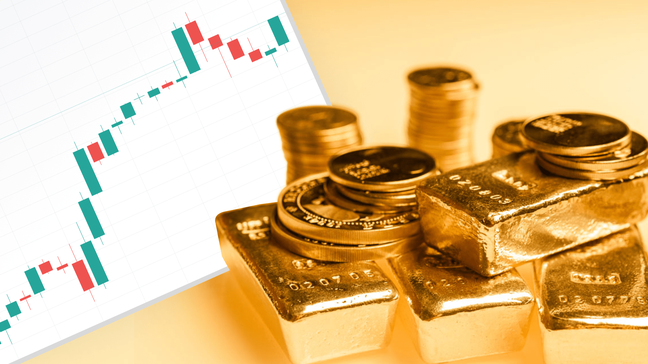Political jitters accelerate across the globe, mainly in the West, and join rate cut forecasts to challenge the market’s previous optimism early Wednesday. The mixed sentiment also takes clues from unimpressive inflation signals from the UK and mostly upbeat US Retail Sales, as well as softer Canada inflation clues. That said, Donald Trump’s lead in the US Presidential Election polls flag fears of the heavy China tariffs and the US Dollar devaluation, as well as the Sino-American tensions. A lack of major data, as well as a cautious mood ahead of Thursday’s European Central Bank (ECB) monetary policy meeting, however, also contribute to restricting the market moves.
Against this backdrop, the US Dollar pares the week-start gains while the EURUSD and the GBPUSD edged higher. That said, USDJPY snaps a two-day winning streak while AUDUSD and NZDUSD print the first daily gains in three. Further, USDCAD reverses the previous day’s retreat from the monthly high as Crude Oil prints a four-day losing streak and talks about the Bank of Canada (BoC) rate cuts gain momentum.
Amid the market’s uncertainty and the US Dollar’s inability to rise, the Gold price reached an all-time high near $2,483 before reversing the gains, mildly offered near $2,465 by the press time.
Elsewhere, ETHUSD snapped a four-day winning streak the previous day before refreshing the monthly early Wednesday. On the other hand, BTCUSD remains on the front foot for the sixth consecutive day while rising to a fresh high in four weeks. That said, the ETHUSD’s earlier pullback could be linked to the market’s hedging ahead of next week’s spot ETH ETF listing and the Mt. Gox transfers. However, optimism about the crypto markets due to Trump’s lead in election polls allows Bitcoin and Ethereum buyers to keep the reins.
Following are the latest moves of the key assets:
- WTI Crude oil declines for the fourth consecutive day while posting mild losses near the monthly low surrounding $80.30, close to $80.60 at the latest.
- Gold retreats from the all-time high of $2,483 to $2,465 by the press time, challenging a two-day uptrend after rising the most in 2024 the previous day.
- The USD Index remains defensive around 104.20 after printing a Doji candlestick.
- Wall Street closed in the Green but the Asia-Pacific markets trade mixed. Further, equities in Britain and Europe lack clear directions during the initial trading hour.
- BTCUSD and ETHUSD both remain firmer near the monthly, close to $65,650 and $3,495 respectively as we write.
Mixed markets challenge US Dollar bulls…
US Dollar Index (DXY) failed to justify mostly upbeat US Retail Sales figures on Tuesday amid political jitters and woes surrounding accelerating US-China tension, which can hurt the world’s biggest economy if enacted. The US Retail Sales Control Group and Core Retail Sales managed to print upbeat figures even as the headlines Retail Sales appeared less impressive for June. Additionally, the Atlanta Fed’s GDPNow Model also revised up Q2 GDP forecasts and the US Export-Import prices improved.
Following the data, the bets on the US Fed’s September rate cuts eased and allowed the US Dollar to renew intraday high, especially when US Presidential Election nominee Donald Trump warned the Fed to not cut the rates ahead of elections. Trump also pushed for heavy tariffs on China and the US Dollar devaluation, which might have challenged the US Dollar bulls.
Apart from the mixed bias about Trump’s Presidency, the International Monetary Fund’s (IMF) downward revision to the US 2024 growth also weighed on the US Dollar and the yields afterward. As a result, the DXY ended up closing near the open prices after a volatile day.
It should be noted that the IMF revised up economic forecasts for China, Eurozone and India while cutting estimates for Japan for 2024. That said, the IMF also predicts only one Fed rate cut in 2024 versus the market expectations of two such moves during the current year. The same should have helped the US Dollar to lick its wounds despite mixed catalysts.
While the US Dollar has an active day, the Euro remained mostly upbeat despite mixed ZEW Sentiment figures for July for Germany and the Eurozone. The reason could be linked to the market’s preparations for Thursday’s European Central Bank (ECB) Monetary Policy Meeting. Also likely to have helped the EURUSD prices could be the latest political peace in France as the President authorized a caretaker government to avoid chaos during the Olympics 2024.
Moving on, GBPUSD grinds near yearly high as mostly softer UK inflation clues jostled with political optimism in Britain after the Labour Party’s glorious victory in the national elections.
USDJPY remained on the front foot in the last two consecutive days before retreating toward the ascending support line stretched from late 2023. In doing so, the Yen pair justifies economic fears surrounding Japan and the market’s preparations for the Bank of Japan’s (BoJ) upcoming rate cut. That said, chatters about the Japanese government’s intervention to defend the Yen also put a floor under the prices of late.
AUDUSD snapped a two-day losing streak as Australia’s Westpac Leading Index showed improving economic activity. However, expectations of witnessing below-trend growth challenge the Aussie pair buyers of late.
On the same line, NZDUSD reversed from a nine-week low to lead the G10 gainers versus the US Dollar. The Kiwi pair’s latest rebound has more to do with the New Zealand (NZ) GDT Price Index than softer prints of the quarterly Consumer Price Index (CPI). Not only the NZ CPI but the Reserve Bank of New Zealand’s (RBNZ) own inflation model also forecasts softer price pressure and justifies the central bank’s receding hawkish bias in the last monetary policy announcements.
USDCAD retreated from a two-week high and posted the first daily loss in four the previous day, lacking momentum of late, even as Canada inflation numbers bolstered the calls for the Bank of Canada (BoC) rate cuts during late 2024. In doing so, the Loonie pair also failed to justify the downbeat performance of Crude Oil, Canada’s key export item. The reason could be linked to the sluggish US Dollar and fears of political drama in the US amid Donald Trump’s lead in polls for the US Presidential Elections.
WTI Crude Oil marked the biggest daily fall in six weeks while refreshing the monthly low the previous day, pressured around the multi-day bottom with mild losses by the press time. The black gold’s latest weakness ignores a higher-than-expected draw in the US Weekly Crude Oil Inventories, per the American Petroleum Institute (API). That said, fears of receding energy demand from China and “higher for longer” rates in the US seemed to have spooked the black gold buyers of late.
Be it the political anxiety in the US and Europe or the uncertainty about the Federal Reserve’s (Fed) rate cuts in 2024, Gold Price benefits from all, especially amid softer yields. Additionally, updates from China suggest higher stimulus to boost economic growth, which in turn helps the precious metal buyers as the dragon nation is the world’s biggest commodity user and has paused the XAUUSD purchase in the last two months. It’s worth observing, however, that the impending US-China tensions, mainly when Donald Trump is in the lead for being US President again, challenge the bullion buyers.
- Strong buy: USDCAD, USDJPY, US Dollar, Silver
- Strong sell: AUDUSD, NZDUSD, GBPUSD
- Buy: BTCUSD, ETHUSD, Nasdaq, Gold, DJI30, USDCNH
- Sell: DAX, FTSE 100, EURUSD, Crude Oil
Mid-tier data from the Eurozone, US can entertain intraday traders…
Given the release of the UK inflation clues, Wednesday’s economic calendar has no top-tier catalysts to please the momentum traders. However, final readings of the Eurozone inflation data, US housing market figures and Industrial Production, as well as the US official weekly oil inventory data, may provide clues to keep the intraday traders on their desks. More importantly, political updates from the US and Middle East news will be the key to watch for clear market directions.
To sum up, the latest political jitters in the US raise questions about the Fed’s ability to cut the rates and the US-China tensions, which in turn test the US Dollar bulls despite fueling the market’s uncertainty. The same joins softer Treasury bond yields and China woes to underpin the Gold price upside. Hence, traders will seek additional proof to support the latest hypothesis to offer more fuel to the precious metal and challenge buyers of the US Dollar and major commodities.
May the trading luck be with you!




